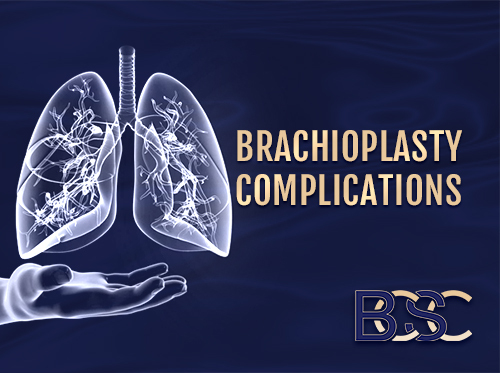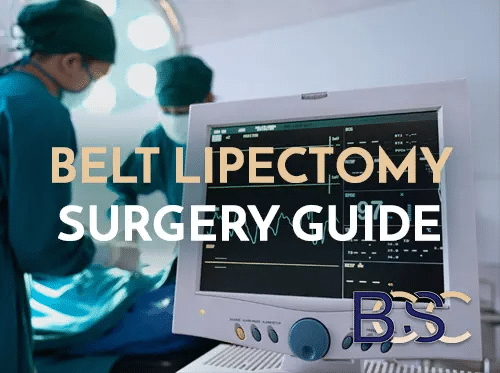Revision Brachioplasty Surgery
If you are reading this article, you may fall into one of two groups. Either you have already undergone brachioplasty (arm reduction surgery) and are unhappy with the results, or you are preparing for your first operation and want to know what options exist if revision surgery becomes necessary. This article will explain what revision brachioplasty involves, when it may be appropriate, and what outcomes can realistically be achieved.
What is Brachioplasty Revision Surgery?
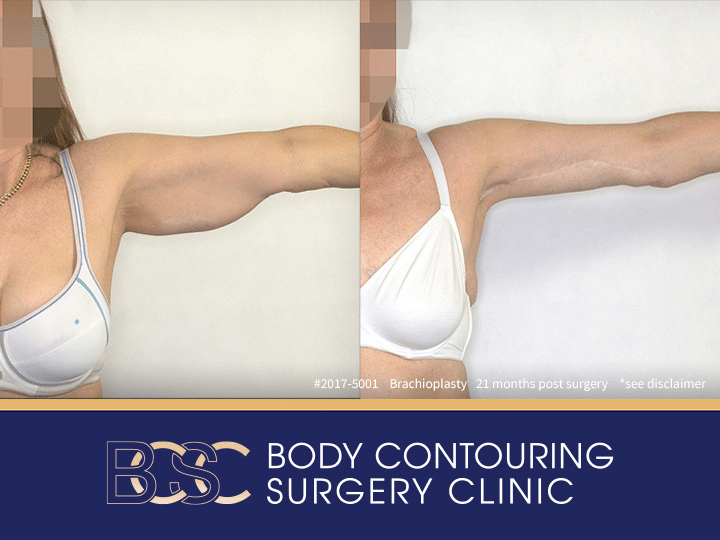
Face blurred for privacy
Disclaimer: Operation performed by Dr Bernard Beldholm. Adult content, surgery has risks, individual results vary, seek 2nd opinion. Please see the full disclaimer.
Brachioplasty is a surgical procedure designed to remove excess skin and fat from the upper arms, most often after significant weight loss. Each year, many Australians undergo this procedure in the hope of improving the shape of their arms.
A small proportion requires additional treatment to address issues such as scarring, skin laxity, or contour irregularities. This is referred to as revision brachioplasty.
Revisions may be minor, such as laser resurfacing for scars, or more extensive, requiring re-operation to remove further skin and tissue. The approach depends on the specific concern and how much correction is needed.
Correcting Unsatisfactory Results
A secondary brachioplasty may be performed for several reasons. The most common include:
Unfavourable Scarring
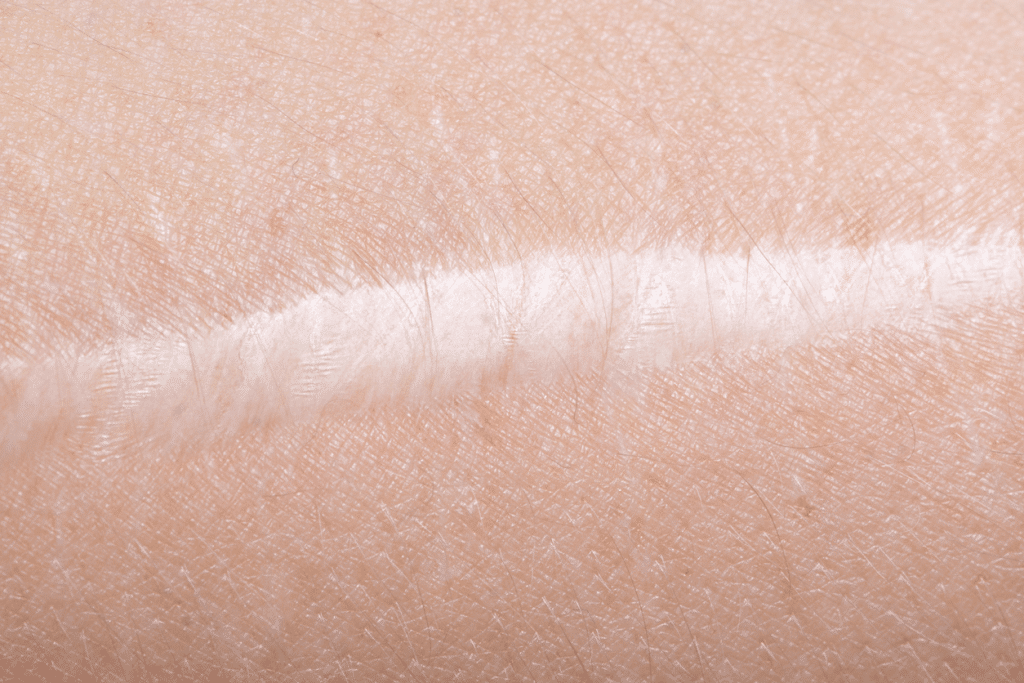
Scars from brachioplasty generally fade into fine lines within one to two years. While most patients find the scars acceptable, some develop concerns such as hypertrophic scars, keloids, or “dog ear” deformities at the scar ends.
Options to improve the appearance of scars include:
- Scar tape or silicone sheeting
- Topical scar gels
- Chemical peels or microdermabrasion
- Laser skin resurfacing
- Surgical scar excision with re-closure
- Additional suturing in selected cases
Contour Irregularities
In some cases, contour abnormalities such as dimpling or puckering may appear due to uneven fat removal or unusual scar tissue formation. These can often be corrected with minor revision procedures.
Asymmetry
It is normal for arms to differ slightly in size or shape. However, significant asymmetry after surgery may require adjustment. This can involve removing extra skin or fat from one side to achieve a more balanced appearance.
Residual Loose Skin
Immediately after surgery, swelling makes the arms appear firmer than they will once healing is complete. Over time, skin and tissues relax. If the outcome is looser than expected, further tightening may be considered.
Surgeons must be cautious during the first procedure not to remove too much skin, as this can compromise wound closure. For this reason, it is often safer to leave some residual laxity, which can later be addressed with a secondary procedure if necessary.
When is the Right Time for Revision?
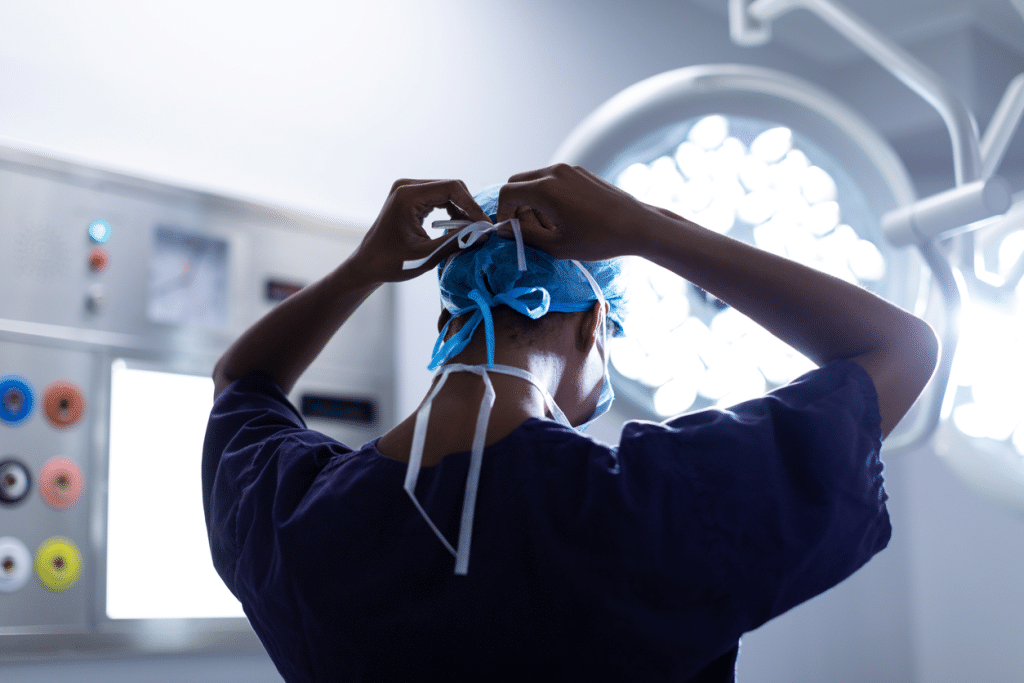
Healing after brachioplasty is gradual. It can take 12–24 months for scars to mature and for tissues to settle into their final position. For this reason, it is generally recommended to wait at least a year before deciding on revision surgery.
If concerns such as persistent asymmetry, bothersome scars, or residual loose skin remain after this period, a revision may be appropriate. Your surgeon will assess whether the issue is due to complications or normal healing.
Considerations and Risks of Revision Surgery
Revision surgery can vary from a small office-based procedure to a full repeat operation under general anaesthesia. Like the initial procedure, it carries risks such as infection, bleeding, wound healing problems, or nerve injury.
Other considerations include:
- Downtime: Recovery may be similar to the first operation, requiring weeks off work and driving.
- Compression garments: These are usually required again to support healing.
- Lifestyle changes: Avoidance of smoking, blood-thinning medications, and heavy lifting is typically advised.
Patients must weigh the benefits of revision against the potential risks and inconvenience.
Is a Poor Result Always the Surgeon’s Fault?
Not necessarily. Outcomes can be influenced by individual healing factors beyond the surgeon’s control. Patients with diabetes, smokers, or those with a family tendency toward poor scarring may be at higher risk of complications. Compliance with aftercare instructions is also critical.
Who is Most Likely to Need a Revision?
Revision brachioplasty is more common in patients with severe skin laxity following massive weight loss. In these cases, it can be difficult to achieve the desired result in a single operation. Some patients require staged procedures to adequately remove the excess skin.
Choosing a surgeon with extensive experience in body contouring surgery is important. A careful initial operation reduces the likelihood of needing revision, but in certain patients, it may remain necessary to achieve the best outcome.

